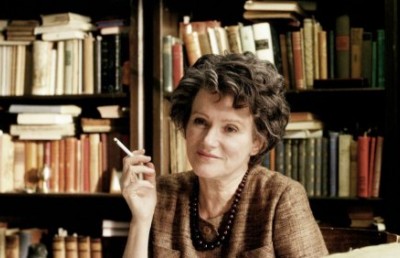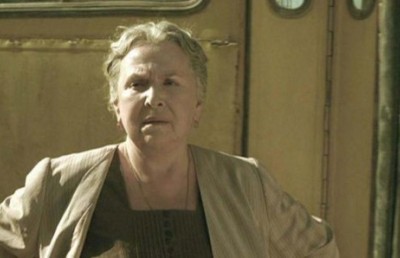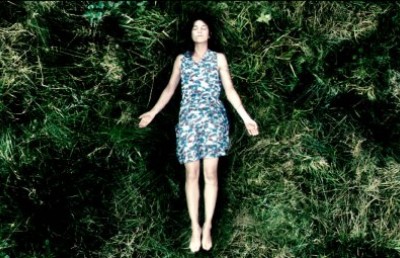Bridgend: Dark Poetry
At Fantasia 2015
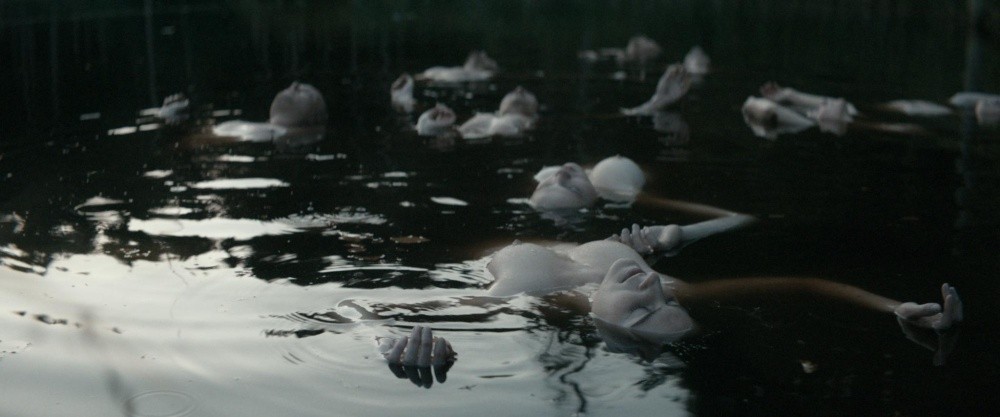
One of my favorite films at Fantasia 2015 was Bridgend (2015, Jeppe Rønde, Danish), loosely based on the suicide pact incidents of Bridgend, South Wales, a town which has seen 79 mainly teen suicides between the years 2007-2012. The police have not gained any great insight into the suicides, claiming there is no connection between the victims, while pointing to the lack of suicide notes and clear motivation. Although director Jeppe Rønde prepared for this film as he would a documentary by spending time with the teenagers of the Welsh former mining town, his film is a dramatization of the events; meanwhile there is also a conventional talking head documentary from 2013 by John Michael Williams on the same subject, Bridgend County, which is available for viewing on youtube: https://www.youtube.com/watch?v=tIMmbOMONhk.
I was able to revisit the film months after Fantasia because the film has received a welcome official DVD release of as part of the KimStim Collection, distributed by the valuable Icarus Films Home Video label. The DVD can be ordered directly from their website. Although I would have loved to see this visually arresting film released in a high definition option, with supplemental material, the bare bones (only a trailer) DVD still represents a satisfying transfer of what is one of the sleeper films of 2015 (all frames grabs used are from the DVD).
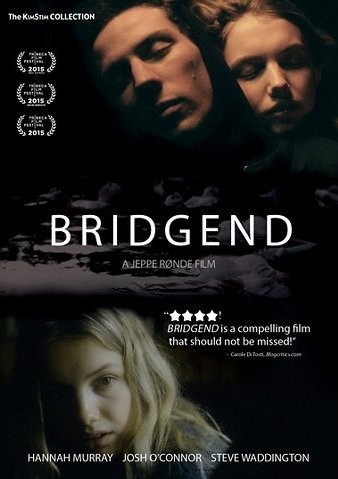
Bridgend is an indication of how impactful a poetic treatment of a dark subject matter can be. When done well, this aesthetic gamble cuts to the heart if not the essence of great horror and reflects one of the philosophical aspects of horror’s contradictory appeal, the push-pull, attraction-repulsion affect, or as Noel Carroll defined it, the quality of ‘art-horror’. When the poetic treatment of the horrific is channeled to great affect the result we get are films such as Les yeux sans visage, Repulsion, Carnival of Souls, Daughters of Darkness, Requiem for a Vampire, and more recently, Toad Road and Spring. Bridgend may not be right next to some of these but operates at the same level of poetry & horror, and is the closest a film has come in style and content to the dark beauty of Toad Road. Bridgend also reminds me of Wisconsin Death Trip (1999), which also uses a poetic structural device of dramatizations and archival photographs to treat a similar subject matter —a small community hit by an inexplicable series of violent events over a concerted period of time (Wisconsin Death Trip also played at Fantasia back around 2000).
The film opens with a tracking shot along a grassy train track that leads to the hanging corpse of a young male teenager, later revealed as Mark. A black dog finds the corpse and lies next to it. As the priest gives a sermon to mourn the “loss of another vibrant young man” and urges that “to find comfort in these difficult times, we must turn toward God,” the film intercuts to quick edits of the teenagers in a bizarre post-suicide ritual rite where they stand by the tree where the hanging occurred and yell out, trance-like, the name of the fallen youth. Into this shattered, hurting community enters a young teenage girl Sarah (Hannah Murray), and her cop father Dave (Steven Waddington) who has been summoned from Bristol, England to help with the investigation of the suicides. Sarah soon joins the gang of teenagers and becomes embroiled in their rituals, without herself ever knowing why they choose to end their lives. Soon after she befriends the group, Sarah becomes attracted to their bad boy leader, Thomas, who kisses Sarah during a party. Later that night Thomas forces Erotic asphyxiation on Sarah. Even the pleasurable act of sex must come with the thrill of death. Later that night Thomas commits suicide, sending the group in a further tailspin which sucks Sarah into it. Sarah’s involvement with the local teens causes her already frail relationship with her father to further deteriorate. Though well intended, Dave is unable to cope with her daughter, or understand her emotional predicament of being caught between her own identity and that of her fledging new friends. Although the film never gives any clear reason for the rash of teen suicides, it offers a powerful context through its less than positive representation of the town’s authority figures and the striking rift between the teenagers and the authority figures. Glimpses of the parents suggest they too have their issues. When Thomas’s mother sees Thomas and Sarah together at drinking party at their home, she looks her over and slyly remarks, “Well you two look sweet together,” and then returns to her nude lover on her bed. After the suicide of one of the girl’s whom Sarah had become close with, Laurel, Sarah goes to the police station to seek her father out and catches him in the throes of sex with a local woman. The priest impotently offers Christian reprieve to the community but is ridiculed and intimidated by the teenagers. The suicides almost seem like a “fuck you” to the town’s Christian morality. After Thomas’ suicide during his wake Thomas’ younger brother Angus slaps his mother. Sarah asks him, “Angus why did you hit your mom?” Angus replies, “You don’t go to heaven when you kill yourself?” The weakened family structure is as close as the film gets to denouncing anyone or anything for the suicidal deaths, but when the full activities of the youth and the community are lumped together the causes are complex and multi-layered: economic woes, boredom, fear of failure and fear of the success of others (the youths forcibly stop anyone of them who wants to leave the town), weak authority figures, alcohol, alienation. Take your pick.
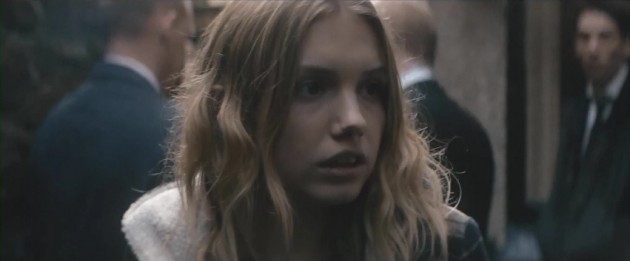
Actress Hannah Murray as Sarah
When not together the teens express themselves through a private chat room where they all use pseudonyms and communicate using sparse, cryptic one-liners that comment on the suicides, leading one of the policemen to suggest that the “internet” is the cause! Short glances shared among adults and the hushed nature of communication suggests a sort of conspiracy of barely repressed emotional guilt among the parents, expressed indirectly through the wonderful montage after Thomas’s suicide that cuts among shots of the church scene, the choir, a mother’s tears, bursts of teen anger, and the priest’s (silent) sermon.
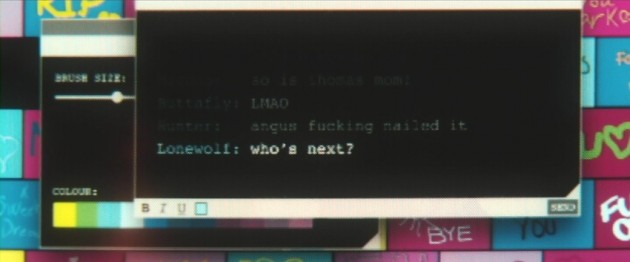
Rønde’s film is reminiscent in style and content to Toad Road, which also dealt with teens struggling to make sense of their place in the world, and using a drastically unconventional way to escape from their pain. The best word to express their ‘pain’ may be ‘anomie’ or in the case of Bridgend, a social anomie that stems from generations who have struggled since the collapse of the mining industry, on which the town’s economy was based. The kids see no future, take no guidance from their elders, and turn to cheap easy fun and escape: heavy drinking, late night jaunts into the lake by the train tracks (where most of the suicide by hanging take place), sex, petty crime, and when all else fails, suicide, perhaps as a last act of defiance to the Christian based authority figures represented by priests, cops, and parents who ineffectually rule the community. The connection to Toad Road (another Fantasia film from a few years back) is felt in many ways. The single path along the grassy train track leading to the “Lake,” which is a sanctity for the teens, where they can strip down, be free, and flirt with their mortality, echoes the ‘seven gates’ along the path leading to hell in Toad Road. The method of choice is by hanging, but the film dramatizes the act of hanging by depicting a thrill act the teens take part in by the Lake area: swinging by rope across the opening of a tunnel timed to avoid the oncoming train. In Toad Road there is a similar rural space, a forest area behind an ex-prison where, myth says, each succeeding fence brings you a step closer to hell. In both films a new girl enters the town and community of teenagers, and her presence sets off changes among the teen community. Both films, Toad Road more so, tend toward the poetic and in Bridgend, Roegian non-linear editing that is unmotivated by anything except the attempt to keep us uncertain as to what is real and imagined. The non-linear editing which sometimes cut back and forth before and after suicides, helps to underscore the nebulous hold on truth and fact that the community’s authority figures have on the suicides. Perhaps as a way to compare the mysterious happenings of Bridgend to the irrational time-space properties of the Zone, Rønde seems to place allusions to Andrei Tarkovsky’s Stalker: the black German Sheppard who seems like a guardian of the suicide space, shots of the dog lying in shallow water and the opening tracking shot over the train tracks.
Identifying what makes a film ‘poetic’ is like trying to catch running water in your hand; or like trying to define time. As the great Ancient philosopher said, “What then is time? If no one asks me, I know what it is. If I wish to explain it to him who asks, I do not know.” And the definition changes for each film. With Bridgend what struck me as poetic was the relationship between scenes that were based on image & dialogue versus scenes that were based on image & sound, with sound being composed of course of music, sound effects and natural sounds. In short, the sound design. In Bridgend there is an even balance between these two sets of scenes. One of the registers for the poetic style is the idea of ‘escape’ which forms a defining notion of characterization. Only two of the teenagers in the film are granted these moments of desire to escape as a form of self-expression: Sarah and Jamie (Josh O’Connor). Sarah has it in a scene right after Laurel’s death when she visits her father at the police station and he refuses her cues for help, then she goes horseback riding.
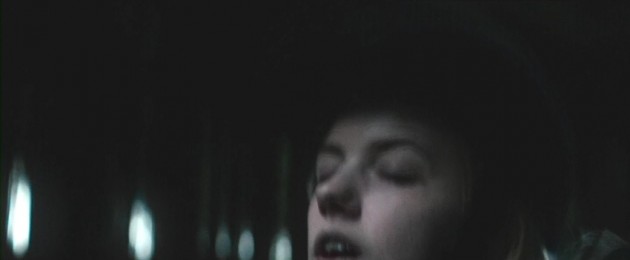
Momentary freedom on a horse ride
Rønde films her in fluid tracking shots in close-up. Sarah and Jamie share a moment of escape when they ride together on Jamie’s moped after a rapturous moment at the Lake where Sarah’s flirtation with death –she swings across the train tunnel opening—seems to galvanize the teenagers. After Sarah’s brush with death they come across Laurel’s hung body. Against a bonfire orange hue they dance, chant and go swimming in the lake, ending with their upturned bodies floating corpse like at the water’s surface, an iconic image which has been used most often by the filmmakers and publicists to express the film’s poetic nature. Sarah leaves the lake and Jamie joins her to drive her back home on his moped. The ride begins in reality –with the two youngsters framed in a close two-shot, wearing safety helmets, but then concludes in pure escapist fantasy, cutting sharply from the helmeted faces to the two of them without helmets, seemingly sleeping with eyes shut, their windswept hair cutting through an inexplicable glowing orange light. As is often the case, poetic style is counterbalanced by a hint of realism, which Rønde achieves with a documentary style, using long takes, hand held camera, and interview type set-ups.
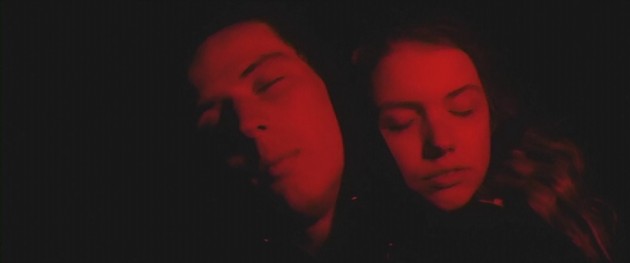
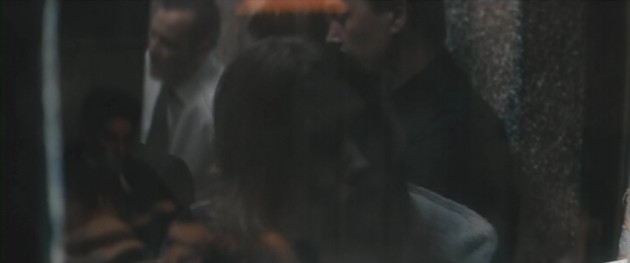
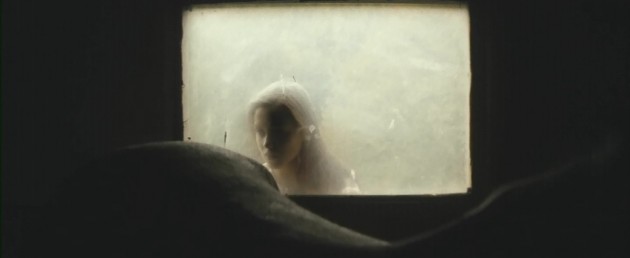
Laurel at Sarah’s stable window

Laurel’s suicide
Another poetic formal device Rønde makes use of is superimpositions and the framing of characters, mostly Sarah, through reflective surfaces. Sarah is often framed either through a window or reflected in one, and Laurel is once framed looking into Sarah’s stable through a window. It is telling that these are the only two characters framed this way, Laurel who tried to get close to Sarah, before committing suicide, and Sarah, the outsider of the group looking in who nearly joined her. It is no doubt that reflected imagery and shots of people framed through murky windows or reflected off of them have an aesthetic beauty on their own, hence a certain poetic register, regardless of the contextual meaning they may have. But with Sarah her outsider status adds some thematic weight to these shots. All these reflected and mirrored shots climax during an almost experimental montage at approximately 75 minutes in, marking the moment where Sarah joins the chat line. A close-up of Sarah looking down at the computer screen gives way to a partially subjective series of superimpositions of previous narrative moments or imaginings: the train tracks, floating corpses in the lake, the dog sitting in water, the teenagers chanting, her father, the moped ride. Oddly the montage sequence reminded me of a similar montage in Under the Skin dealing with another ‘outsider’ female character, the alien played by Scarlett Johanssen.
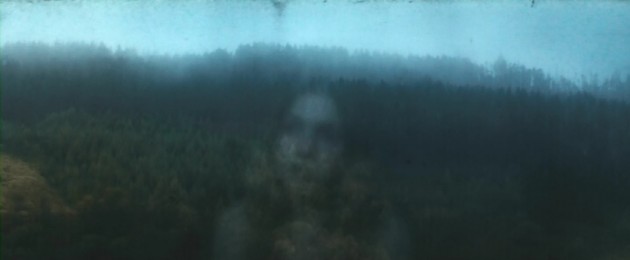
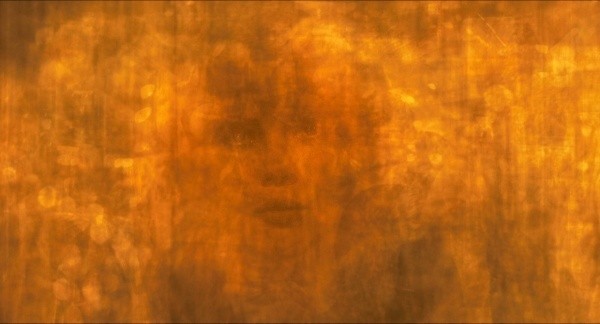
Under the Skin (Starring Scarlet Johansson, who Hannah Murray resembles somewhat)
Rønde’s attraction to the poetic form is stated clearly in the two classroom scenes. In both scenes the teacher is discussing poetry, and in the second perhaps the most famous poem by the most famous Welsh poet, Dylan Thomas, is recited: “And death shall have no dominion.” Thomas’ famous poem was written in 1933 apparently as a suggestion from a friend to write a poem about immortality, making it an odd choice for a film about suicide; unless the idea was to bestow a notion of poetic irony to the film, suggesting through the Thomas poem that the spirit of the dead teens live on, a notion that is upheld by the behavior of the teens and the film’s ambiguous conclusion. Dave finds her daughter’s limp body at the end of a rope in the Lake area. Dave brings Sarah to a hospital, where she lies in a coma. Her body appears lifeless, but a visit from Jamie brings her back to life. He takes her back to the Lake, where Sarah strips and slowly descends into the Lake. A few shots later and Sarah is leading, in a triangular formation, Jamie, Angus, Danny, and many other teens toward a fire in the distant background (It is hard to tell, but I wondered to myself, are any of the dead teenagers in this group?). Does Sarah indeed die, and return as a spirit in the concluding lake scene, along with the other teens who committed suicide? Or does the final scene mean that Sarah and Jamie, and by extension all the teenagers, will ultimately find sanctity and salvation? Or does the burning fire they are all swimming toward represent the eternal damnation of their souls?) Director Rønde also draws inspiration from Thomas’ poem for some of his film’s imagery. For example, the iconic, and utterly captivating, shot of the upturned bodies (corpses?) floating at the water’s surface is possibly inspired by the Dylan Thomas line, “Though they sink through the sea they shall rise again.” While the above discussed final shot seems to echo the line, “Dead men naked they shall be one.”



